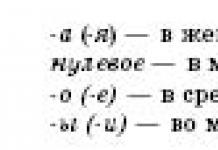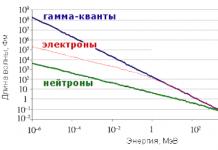TORG-18is a journal that records the movement of goods in a warehouse. This journal is maintained by the financially responsible person. You can learn more about the procedure for filling it out in our article.
How to use the TORG-18 goods register
In order for the storekeeper to be able to record the movement and balances of inventory items (inventory and materials), as well as containers in the warehouse entrusted to him, the TORG-18 form is provided, the form of which was approved by Decree of the State Statistics Committee of the Russian Federation dated December 25, 1998 No. 132. Information about receipt/expense and balance of goods. The unified form contains all the necessary details and columns that are needed to maintain inventory records.
Information for entry into TORG-18 is taken from primary documentation (invoices) or from cumulative statements for accounting for the day of containers and inventory items. The journal is filled out by item, quantity, price, and grade.
For information on how to fill out a document similar in structure, the turnover sheet, read the article “How to fill out the turnover sheet (form, sample)?” .
If the company uses the option of automated information processing when maintaining accounting, then this form is also recommended for use. It can be maintained and stored both on typewritten media and in paper form.
Rules for filling out the journal
Information is entered into the journal for each transaction performed (expenditure or receipt), reflecting the movement of inventory items in the warehouse. At the same time, for each transaction reflected in TORG-18, the balance of goods in the warehouse is calculated.
PLEASE NOTE!Information in the register is entered in the units of measurement that were indicated on the title page of the journal.
In this accounting register, on the first and subsequent pages, the tabular section contains the following data:
- date of the completed transaction for the expense/receipt of inventory items;
- number of the primary document on the basis of which the operation was performed;
- the quantity of goods received/shipped, which is entered in the “Incoming” or “Output” columns;
- the remaining quantity of goods after completion of the operation (the total weight of inventory items received from the supplier can be displayed here, along with containers and packaging intended to keep inventory items intact);
- Any comment can be indicated in column 7; Typically, information is provided here that may affect the total weight of inventory items.
Read about what documents are drawn up upon acceptance of goods.
In order to account for materials and other inventory items in the budgetary sector, the Ministry of Finance of the Russian Federation approved a special document - “The Book of Accounting for Material Assets”. The main purpose of the document is to control the movement and remains of inventory items at their storage locations. The responsibility for filling out the register is assigned to financially responsible persons.
Features of using the book
“The book of accounting of material assets” in the form 0504042 is a mandatory document for government agencies. Organizations operating in the commercial sector may use this register at their own discretion. The form of the document was approved by Order of the Ministry of Finance of the Russian Federation dated March 30, 2015 No. 52n.
When filling out the form, please note that a separate page is allocated for each item of inventory. Accounting must be kept by name, grade and quantity of inventory items. All materials and products received at the warehouse are accepted for accounting. The source of their receipt and the method of acquisition does not matter. Inventory and materials received or departed from the organization must be reflected in form 0504042 “Book of records of material assets”. It is important that the information contained in the register fully corresponds to the actual availability of property in the organization.
Organizations periodically carry out inspections, the purpose of which is to monitor the receipt of goods and materials and their expenditure. During inspections, responsible persons compare entries in the book with accounting data. The results are recorded in a special table on the last page of the book.
The “Wealth Accounting Book,” a sample of which is presented below, consists of two types of pages. The main pages display data on inventory items (each type on a separate page), and the second - verification (last in the book) page is filled out by the persons conducting the verification.
Each page of the document contains the following information:
name of the institution, structural unit, full name responsible person;
data on the storage location of inventory items (warehouse, rack, cell);
name of inventory items;
unit of measurement;
unit price;
brand, grade, size.
Below is a table that directly displays information about the movement of inventory items. Here you need to indicate:
the date the entry was made;
number and date of drawing up the document that became the basis for the operation;
name of the organization or full name persons from whom the inventory items were received or to whom they were issued;
receipt, expense and balance of inventory items on a specific date;
date of control, full name and signature of the responsible person.
Form 0504042 “Book of records of material assets”, as a rule, is filled out by the storekeeper (or other materially responsible person). The pages of the book should be numbered and laced. On the last page indicate the total number of sheets of the book. The signatures of the head of the institution and the chief accountant, as well as the seal of the institution, must also appear here.
How to fill out the “Wealth Accounting Book”
There are certain rules that must be followed when filling out the document. Since the form of the register is approved at the legislative level, you cannot make changes to it, delete or add any columns. There should not be any difficulties when filling out the book; the main thing is to make reliable entries in it in a timely manner and affix the signatures of the responsible persons.
Filling out the “Book of Material Assets” is carried out as follows:
First of all, fill out the “header” of the document. This includes information about the institution and structural unit in which inventory records are kept. You should also indicate your position and full name. the person responsible for keeping records and filling out the book.
The start date of register maintenance is indicated in the corresponding column. The closing date is indicated only when the bookkeeping ends.
Now you should proceed to filling out the first table, consisting of 11 columns. This includes detailed information about inventory items (price, characteristics, unit of measurement, stock norm) and the location of their storage (warehouse name, rack and cell number).
In the line “Name of material” indicate the name of a specific type of goods and materials. In the “Code” line put the code that was assigned to the material by the accounting department.
Below is the second table, consisting of 9 columns. It is intended for records of receipt and release of inventory items. Records must be made for each fact of receipt or issue of specific inventory items. Each entry has its own serial number.
In the first column indicate the number of the entry, then the date when it was made, then write down the number and date of drawing up the document that is the basis for the issuance or acceptance of material assets. This may be a requirement - an invoice for the issuance of materials or a limit card.
The next three columns are intended to display transactions for the receipt and expenditure of inventory items. Based on them, the balance of material assets in the warehouse is calculated.
In the last column, check marks are placed on the implementation of control. Here indicate the date of inspection, full name. and the signature of the person who carried it out.
The second page of the document looks like a table consisting of three columns. After carrying out control activities, the responsible person makes a corresponding note here. The table indicates the following: the date of the inspection, comments and suggestions, position and signature of the inspector.
Sample inventory book
You can download the “Wealth Accounting Book” from the link below.
Keep a book of material assets not difficult. But since this procedure is provided for the purpose of monitoring the receipt of materials at the enterprise and their issuance, it plays particularly important role. The person responsible for the arrival and disposal of inventory items must be extremely attentive to his responsibility for documenting the transactions performed.
Introduced since 2015 a new form of journal for recording material assets at the enterprise, in connection with which some rules for filling out and maintaining primary documentation have changed. Due to the high importance and maximum responsibility for the imputed organizational property, storekeepers and other materially responsible persons must be aware of the changes that have occurred and the rules for documenting material flows.
General provisions
 The purpose of keeping records of material assets is control over the safety and rational operation of enterprise property. Information about property located in storage areas is entered into a special warehouse journal.
The purpose of keeping records of material assets is control over the safety and rational operation of enterprise property. Information about property located in storage areas is entered into a special warehouse journal.
Responsibilities for keeping records of valuables and filling out the document are assigned to the financially responsible person - storekeeper, appointed director of the company. All material assets arriving at the warehouse are accepted for accounting, regardless of the method of their acquisition and the source of receipt.
Material assets arriving or leaving the enterprise are subject to capitalization and write-off according to the accounting book on the same day. The information contained in it must fully correspond to the actual availability of property in the organization.
Property accounting is carried out by the names of materials (products, equipment, etc.), their quantity, and types. To do this, fill out separate pages for each title.
The issuance of material assets to employees is carried out by the storekeeper for signature. The fact of its commission is recorded in the accounting book.
The company regularly conducts checking the availability of material assets and the condition of accounting documents. Accounting data is verified against the contents of the warehouse journal. After reconciling the information obtained as a result of the audit, a special mark is placed in the appropriate section of the accounting book.
Regulatory acts
 Requirement, established by Article 9 of the Federal Law “On Accounting”, that all business transactions carried out at the enterprise must be documented with supporting documentation, i.e. primary documents used for accounting purposes, canceled. Nevertheless, organizations continue to follow it due to the requirements of other regulatory legal acts.
Requirement, established by Article 9 of the Federal Law “On Accounting”, that all business transactions carried out at the enterprise must be documented with supporting documentation, i.e. primary documents used for accounting purposes, canceled. Nevertheless, organizations continue to follow it due to the requirements of other regulatory legal acts.
If a business transaction is not documented in a primary accounting document, it is not accepted for accounting and is not reflected in the accounting registers. Primary documentation is compiled on strict forms included in albums of unified primary accounting forms.
Decree of the Government of the Russian Federation No. 835 “On primary accounting documents” requires the use of developed and approved forms of primary documents by all companies, regardless of their legal form.
Filling procedure
Filled in first document header (or title page), which includes following data:
- full name of the company;
- the name of the structural unit where the accounting journal is kept;
- position and full name of the financially responsible person keeping the book;
- the start date of maintaining the document (the date of its closure is indicated at the end of the accounting journal).
At the next stage, the table is entered information about an item of material value. A separate sheet is drawn up for each name. Table includes seven counts:
- Code designation of the place of storage of material assets - the enterprise warehouse.
- Rack.
- Cell.
- Unit of measurement (this can be a piece, a pack, a package, etc., depending on the type of property).
- Price (per unit of stored item).
- Characteristics (sizes, grade, profile, brand).
- Inventory norm (represents the required amount of material assets available in the warehouse, allowing the enterprise to operate without interruptions).
Next, enter information in the line "Name of material", for example, “calculator”, “sanding machine” or “printer paper”. The material code that was assigned to it by the accounting department is also indicated.

Then follows a table in which notes on the receipt and release of materials are entered. An entry in the accounting book is made by the responsible person for each fact of receipt or issue of a certain material value. The table is filled in next order:
- The first column contains the serial number of the record. Numbering starts from one. Accordingly, the first entry will be numbered “1”.
- The second column contains the date the entry was made. It must correspond to the actual receipt or disposal of material.
- The third column records the date and number of the document that is the basis for accepting material value (for example, a limit card when returning unused balances to the warehouse) or issuing it (for example, a statement for the issuance of material for the needs of the company).
- The fourth column should reflect the source of receipt of the material (for example, the supplier) or the division of the enterprise to which the value was issued and its financially responsible person.
- The option for filling out the fifth and sixth columns depends on the type of operation: reception (“Incoming” in the fifth column) or disposal (in the sixth column “Expense”).
- The seventh column contains the amount of material remaining in the warehouse at the end of the current operation.
- The final column is intended to indicate control. It includes the date of the inspection performed and the signature of the person who conducted it.
The last page of the accounting book is intended for entering information about ongoing inspections. It also has a tabular form consisting of three graphs: date of inspection, comments and suggestions, position and signature of the inspection person. This page is drawn up by the accountant after the actual implementation of control measures.
 The form of the accounting book was approved by the Ministry of Finance in 2015 by Order No. 52n. According to OKUD her number 0504206
. The form is mandatory for carrying out inventory accounting operations at enterprises.
The form of the accounting book was approved by the Ministry of Finance in 2015 by Order No. 52n. According to OKUD her number 0504206
. The form is mandatory for carrying out inventory accounting operations at enterprises.
It has been used in the formation of the accounting policy of a business entity since 2015 (the time of introduction into practice) and is called “Card (book) for recording the issuance of property for use”. Previously, accounting for the receipt and storage of material assets at the enterprise was formalized according to form MX-5, where a separate section was allocated for each type of material.
Despite the fact that the new form relates to primary accounting documentation, at its core it is an accounting register that is focused only on maintaining on paper.
Note! Each operation for the issuance of property for personal use and for its return must be carried out against signature in form 0504206 of the person who received the material assets, with the date of actual execution of the actions.
The journal is most widely used for operational accounting of such property as workwear, personal protective equipment, and work shoes. It is not provided for its electronic format, since the document does not have columns for the signatures of responsible persons. As a rule, the log is kept by a warehouse employee, filling it out manually. Forms can be obtained by simply printing out the electronic version or by ordering from a printing house.
Accounting journal is maintained indefinitely until it is completely filled. The cover must contain the name of the company, the position and full name of the person responsible for its preparation, the date of establishment and end of the document. All sheets are subject to sequential numbering. They must be stitched and sealed with a company seal.
Note! It is prohibited to remove any details from official forms! Decree of the State Statistics Committee of the Russian Federation No. 20 of 1999 on the procedure for applying unified forms allows enterprises, if necessary, to enter additional details into the forms of primary accounting documentation. However, all details available on the approved unified forms must remain unchanged, including the name of the document, form number, code.
When making a decision at the enterprise to adjust the approved forms (entering additional details), all changes made must be formalized by relevant local organizational and legal acts.
The formats of the forms contained in the albums of unified primary accounting documentation are advisory nature. They can be changed internally in accordance with the needs of the organization. For example, you can expand or narrow lines, columns, include additional lines and loose pages for convenient placement and easy processing of the necessary information.
So, the book of materials is kept at the place of their receipt, storage and issue for use. Each operation must be entered into the document on the day it is carried out. The journal form is tabular form. There are no difficulties in filling it out. Main - make notes on time with signatures of responsible persons. A separate page is allocated for each type of material. All of them must be numbered.
The structural basis of the book may be changed. However, preserving the details initially established in the unified version is mandatory.
Previously, to record the receipt and storage of inventory items at the warehouse, the MX-5 form was used, in which a separate section was allocated for each type of inventory item.
Magazine form
Article 9 of the Federal Law dated December 6, 2011 No. 402-FZ “On Accounting” canceled the requirement to use established document forms. However, the forms of papers used as primary accounting documents, established by authorized bodies in accordance with and on the basis of other regulations, continue to be applied.
An example is the inventory log used by storekeepers in military units. Using his example, an organization can develop its own document form.
Journal of material assets, form 26
Such books are kept indefinitely until they are completely filled. The cover indicates the name of the organization, full name and position of the person responsible for filling out the document, the start and end date of filling out the document. The sheets are numbered and stitched, sealed with the organization's seal.
Accounting for inventory items at an enterprise
Accounting for inventory items at an enterprise is carried out in order to monitor the safety and appropriateness of use of property. Information about the property of the enterprise is entered into the warehouse journal. Keeping records of material assets, as well as the obligation to make entries in the document, falls on the specialist appointed by the director - the storekeeper. All types of material assets that arrived at the enterprise’s warehouse are subject to accounting. Moreover, the source of their receipt and the method of acquisition does not matter.
MCs that arrived or left the organization are credited or written off in the accounting book on the same day. The data specified in it must correspond to the availability of material resources at the enterprise.
The storekeeper gives it to the MC employees against signature. Information about all issued MCs is entered into the book.
Periodically, the organization checks the availability of property and the state of accounting documentation in the organization. Information about the results of the check is verified with the data in the book, which is noted in the appropriate section.


























